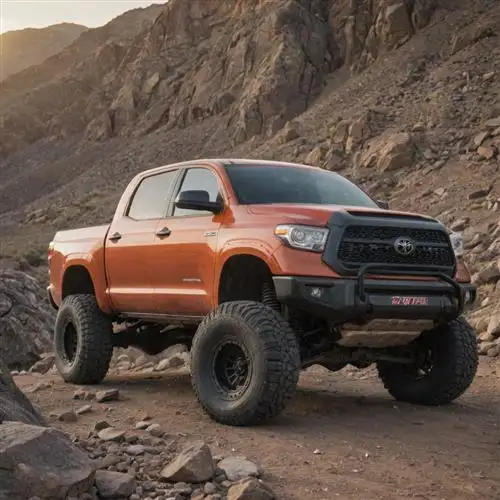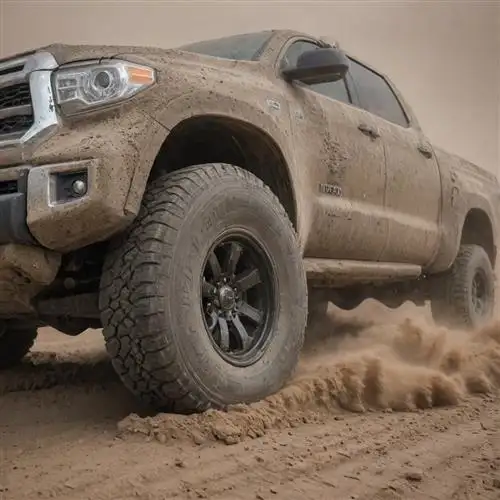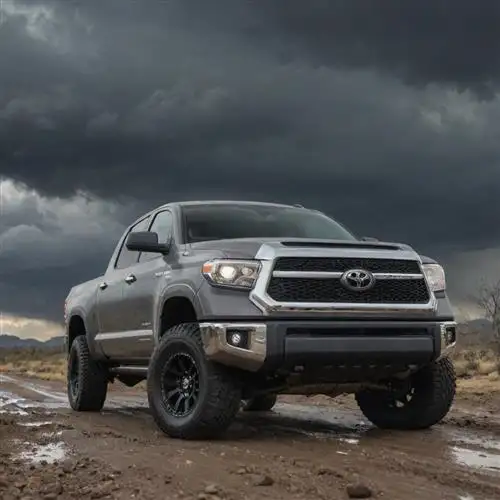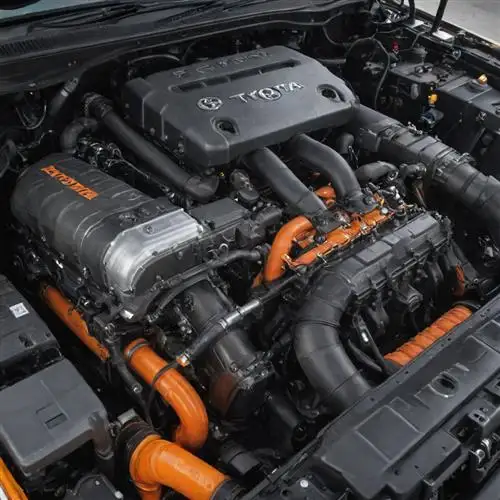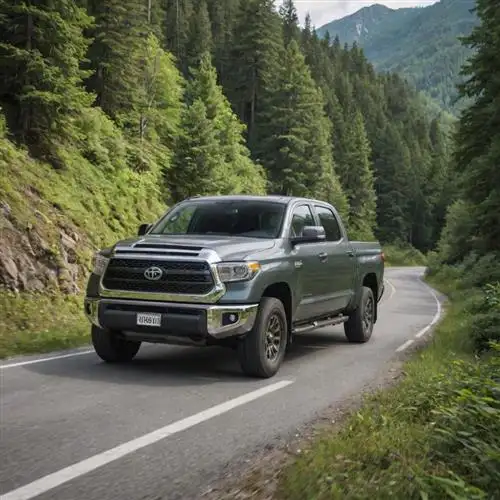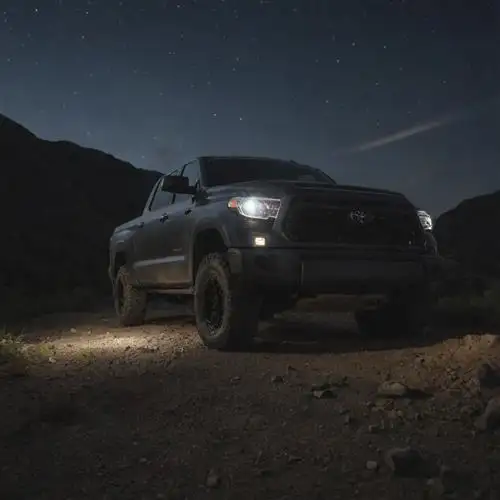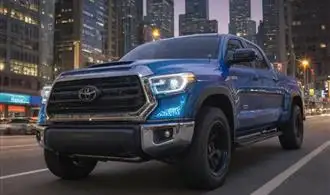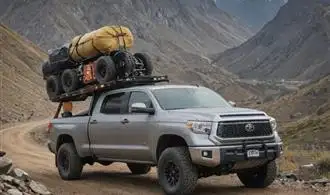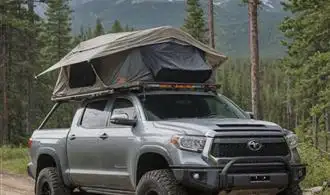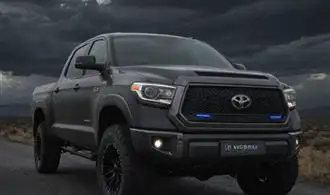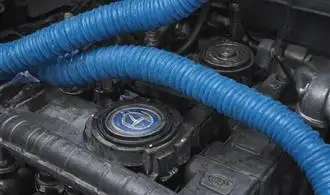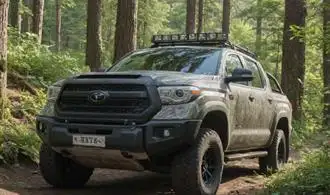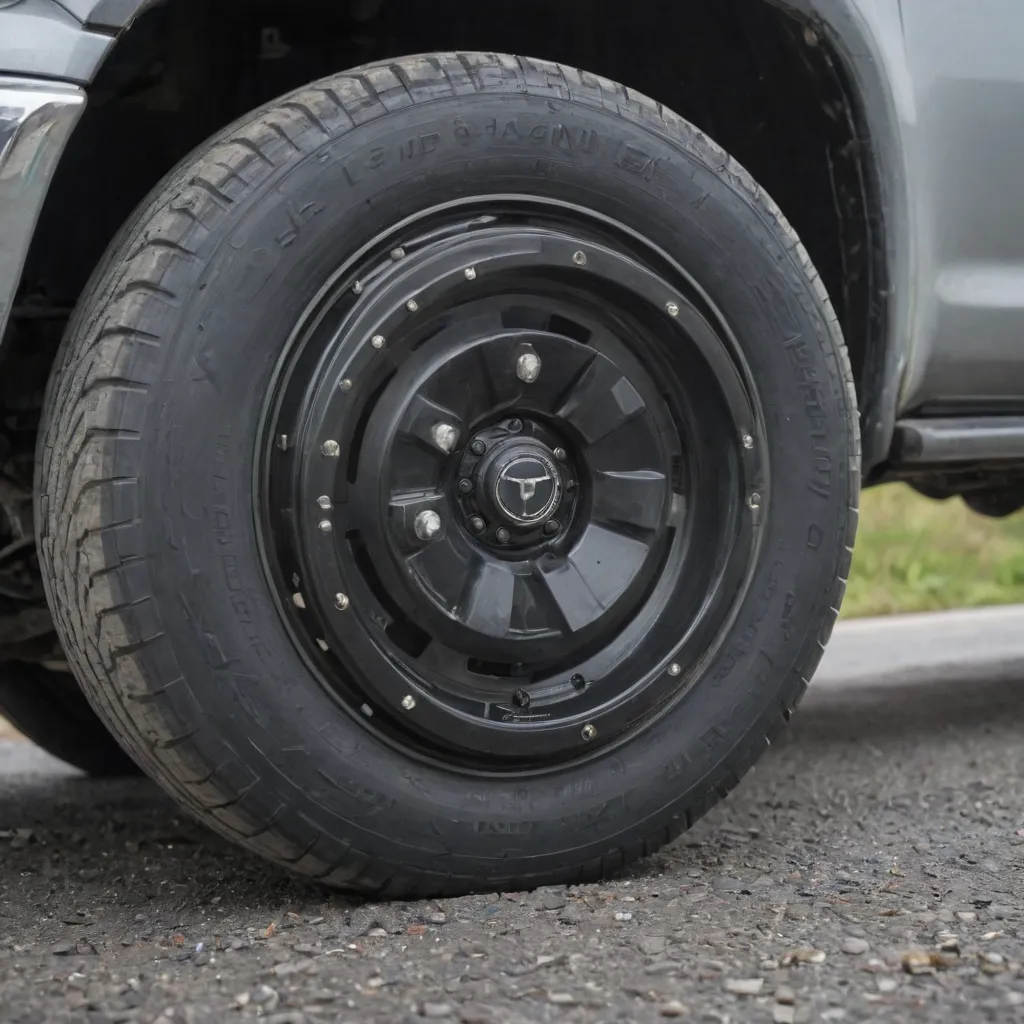
Lift Kit for Improved Clearance
Improving the clearance of your Toyota Tundra can be a game-changer, allowing you to tackle more challenging terrain and unlock the full potential of your off-road adventures. A lift kit is a popular choice for Tundra owners seeking greater ground clearance, and the options available on the market offer a range of benefits.
When selecting a lift kit, it's essential to consider factors such as the desired height increase, the quality of the components, and the overall compatibility with your Tundra's suspension system. High-quality lift kits from reputable manufacturers can provide a smooth and stable ride, while also enhancing the overall aesthetics of your vehicle.
The installation process of a lift kit can be complex, and it's recommended to have it done by a professional mechanic who is experienced in working with Tundra modifications. Proper installation ensures that the lift kit is integrated seamlessly with your Tundra's existing components, minimizing the risk of any issues or safety concerns.
In addition to increased ground clearance, a lift kit can also provide benefits such as improved approach and departure angles, allowing you to tackle steeper inclines and navigate more challenging terrain with greater ease. This can be particularly useful for Tundra owners who frequently venture off-road or need to navigate through rough landscapes.
It's important to note that installing a lift kit may also require additional modifications, such as upgrading the brakes, suspension components, or even the tires to accommodate the increased height. These considerations should be taken into account to ensure the overall performance and safety of your Tundra.
Massive Tires for Extreme Grip
When it comes to upgrading your Toyota Tundra, few modifications can have as dramatic an impact as swapping out the factory tires for massive, aggressive off-road rubber. Larger tires not only enhance the Tundra's tough, rugged aesthetic, but they also provide significantly improved traction and capability, allowing you to conquer the most challenging terrain with ease.
The key to selecting the right oversized tires lies in finding the perfect balance between size, tread pattern, and load rating. Opt for tires with a minimum 33-inch diameter, as these larger contact patches will deliver superior grip on loose surfaces like sand, mud, and snow. Look for tires with deep, chunky lugs that bite into soft ground, providing exceptional off-road performance.
In addition to the tread design, pay close attention to the tire's load rating. Choosing a tire with a higher load index ensures your Tundra can handle the increased weight and stress of the larger rubber without compromising safety or handling. Look for tires rated for at least a 10-ply construction, as these heavy-duty models are better equipped to withstand the rigors of off-road use.
When upgrading to massive tires, be mindful of the potential impact on your Tundra's ride quality, fuel economy, and stock suspension components. You may need to consider additional modifications, such as a lift kit or suspension upgrades, to accommodate the larger wheel and tire combination.
Aggressive Exterior Styling Upgrades
For Tundra owners seeking to transform their trucks into rugged, head-turning machines, exterior styling upgrades offer a powerful solution. These modifications can dramatically enhance the truck's presence on the road, turning heads and commanding attention wherever you go. One of the most impactful areas to focus on is the front end, where a bold grille replacement can instantly revitalize the Tundra's appearance.
When it comes to grille upgrades, the options are virtually endless. From sleek, minimalist designs to aggressive, mesh-laden iterations, the choice ultimately comes down to personal preference and the desired aesthetic. Many aftermarket manufacturers offer grille kits that seamlessly integrate with the Tundra's existing structure, ensuring a hassle-free installation process. These kits often include additional elements like LED lighting, further amplifying the truck's visual impact.
Beyond the grille, the Tundra's front bumper is another prime target for exterior upgrades. Replacement bumpers, featuring larger openings, integrated light bars, and robust skid plates, can instantly transform the truck's appearance, imbuing it with a rugged, off-road-ready stance. These upgrades not only enhance the Tundra's visual appeal but also provide added functionality and protection for those who venture off the beaten path.
Wheel and tire upgrades are another essential component of an aggressive exterior styling overhaul. Larger, more aggressive wheels and tires can instantly give the Tundra a commanding presence on the road. When paired with a suspension lift kit, this combination can result in a truly imposing and distinctive appearance that sets the Tundra apart from the crowd.
For Tundra owners seeking a more personalized and distinctive look, custom paint and wrap options can be a game-changer. From bold, contrasting colors to eye-catching graphic designs, the possibilities are virtually limitless. These customizations allow owners to truly make their Tundra their own, reflecting their unique style and preferences.
Powerful Engine Modifications
When it comes to upgrading your Toyota Tundra, one of the most impactful areas to focus on is the engine. By making strategic modifications, you can unlock a whole new level of power and performance from your truck. Here are some of the most effective engine upgrades to consider:
Turbocharger or Supercharger Installation: Adding a forced induction system, such as a turbocharger or supercharger, can significantly boost your Tundra's horsepower and torque. These systems force more air into the engine, allowing it to produce more power. High-quality turbo or supercharger kits from reputable brands can provide substantial gains, often in the range of 50-100 additional horsepower.
Engine Displacement Increase: Increasing the displacement of your Tundra's engine can unlock even more power. This can be achieved through a variety of methods, such as installing larger pistons, cylinder heads, or even a complete engine swap. While this is a more involved and costly upgrade, it can result in a significant increase in power output, often in the range of 75-150 additional horsepower.
Performance Exhaust System: Upgrading your Tundra's exhaust system can greatly improve airflow and backpressure, leading to increased power and efficiency. Look for high-flow catalytic converters, larger-diameter pipes, and performance mufflers that are designed to minimize restriction and optimize exhaust flow.
Engine Management Tuning: Complementing your hardware upgrades, a professional engine tuning or remapping can further enhance your Tundra's power. Experienced tuners can optimize the engine's air/fuel ratio, ignition timing, and other parameters to unlock additional horsepower and torque, often in the range of 20-50 additional horsepower.
Air Intake Modifications: Improving the airflow into your Tundra's engine can also lead to power gains. This can be achieved through the installation of a cold air intake system or a high-flow air filter. These upgrades can provide a modest increase in power, typically in the range of 10-20 additional horsepower.
Customized Suspension for Improved Handling
Upgrading the suspension of your Toyota Tundra can have a profound impact on its handling and overall driving experience. One of the key areas to focus on is the suspension system, which plays a crucial role in absorbing shocks, maintaining stability, and providing a smooth ride. By investing in a customized suspension, you can address a variety of issues, from poor traction on rough terrain to excessive body roll during tight turns.
When it comes to suspension upgrades, there are several options to consider. Lift kits, for instance, can raise the height of your Tundra, allowing for larger tires and improved ground clearance. This can be particularly beneficial for off-road enthusiasts who need to navigate uneven surfaces, obstacles, and steep inclines. Paired with premium shocks and struts, a lift kit can enhance the Tundra's capability and provide a more responsive and controlled driving experience.
Another popular suspension upgrade is the installation of adjustable coilover systems. These systems allow you to fine-tune the ride height, compression, and rebound settings to match your driving preferences and the terrain you encounter. By optimizing these parameters, you can achieve a balance between comfort, handling, and load-carrying capacity, making your Tundra more adaptable to a variety of driving conditions.
For those seeking even more performance-oriented upgrades, the integration of aftermarket control arms and suspension links can be a game-changer. These components can improve the Tundra's wheel articulation, enhancing its ability to maintain traction and navigate challenging off-road environments. Additionally, the installation of high-quality bushings can reduce the effects of wear and tear, contributing to a more responsive and precise steering feel.
Advanced Lighting Upgrades for Maximum Visibility
Enhancing the lighting on your Toyota Tundra can significantly improve visibility, safety, and the overall aesthetic of your vehicle. One of the most impactful upgrades you can make is to install LED headlights. LED bulbs offer several advantages over traditional halogen bulbs, including brighter illumination, longer lifespan, and greater energy efficiency. When choosing LED headlights, look for options that provide a crisp, white light with a high color temperature, as this will ensure optimal road visibility. Additionally, consider upgrading to LED fog lights, which can dramatically improve visibility in inclement weather conditions.
Another essential lighting upgrade for your Tundra is the installation of auxiliary lighting. This can include LED light bars, spotlights, or cube lights, which can be mounted on the roof, grille, or bumper of your vehicle. These additional light sources can dramatically increase your overall lighting output, making it easier to navigate off-road terrain, illuminate work sites, or improve visibility during nighttime driving. When selecting auxiliary lighting, pay close attention to the lumen output, beam pattern, and mounting options to ensure they integrate seamlessly with your Tundra's existing lighting system.
Upgrading the interior lighting of your Tundra can also have a significant impact on your driving experience. Consider replacing the standard dome and map lights with high-quality LED bulbs, which will provide a brighter and more uniform illumination. This can enhance visibility when navigating your vehicle at night or in low-light conditions. Additionally, you may want to explore the possibility of installing LED accent lighting, such as underglow or interior mood lighting, to create a unique and personalized look for your Tundra.
Upgraded Braking System for Confident Stopping Power
One of the most crucial upgrades you can make to your Toyota Tundra is enhancing its braking system. The factory brakes, while capable, may not provide the level of stopping power and confidence you desire, especially when towing heavy loads or navigating challenging off-road terrain. An upgraded braking system can transform the way your Tundra handles, offering improved safety, control, and overall driving experience.
When it comes to upgrading your Tundra's brakes, there are several options to consider. Larger rotors, paired with high-performance brake pads, can significantly improve braking performance. Upgrading to a premium pad material, such as semi-metallic or ceramic, can provide increased friction, better heat dissipation, and more consistent braking feel. Additionally, stainless steel braided brake lines can help eliminate brake line flex, enhancing pedal responsiveness and modulation.
For those seeking maximum braking power, a brake caliper upgrade may be the solution. Replacing the factory calipers with larger, more robust units can provide increased clamping force and improved heat management. This can be especially beneficial for those who tow heavy trailers or frequently encounter steep descents.
Alongside the brake components, the master cylinder is another crucial element to consider. Upgrading to a larger, high-performance master cylinder can increase hydraulic pressure and improve overall braking efficiency. This can be particularly useful for those who have modified their Tundra with larger tires or lifted suspension, which can place additional demands on the braking system.

